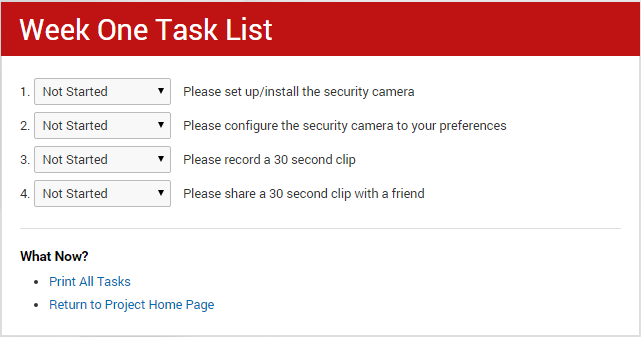
One of the most effective ways to obtain feedback from beta testers is to ask them for it in the form of tasks. A task is a specific activity you can assign to your beta testers that they can perform and report back to you on. You can request testers do everything from installing the product, to updating to a newer version of your software, to requesting feedback on a specific product feature/bug.
Assigned tasks can serve a variety of roles during beta testing depending on your goals. If used correctly, tasks can encourage the feedback collection you need, when you need it. In an effort to help you maximize the effectiveness of your tasks, here’s our advice on getting the most out of this method of feedback collection.

1. Assign broad tasks early in the test
Some testers lack the initial drive to independently explore your product or are intimidated by the prospect of their first beta test. We’ve found that giving testers a set of general tasks will help kickstart their product usage, after which testers are more likely to conduct their own exploration.
These tasks should not include assignments that focus the tester on very specific features or activities, but rather the product as a whole (e.g. download the software, load the software, review the online help documentation). In most cases, while you may have to nurture participation in the beginning, testers will be much more independent once they build some momentum.
2. Assign objectives rather than steps
Rather than telling testers what to do step-by-step, give them an end goal to better assess the product’s usability. If you give testers a task like “Change your avatar”, you not only assess how the avatar process works, but also how easy it is to find and use it in your product.

3. Use tasks to gauge frequency
Tasks are also a great way to gauge how often a bug is occurring. You can assign a task to your testers to complete a certain action and see how many run into the bug. This will give you an idea of how widespread the bug is, and if it’s only affecting certain segments of your users.
4. Use specific tasks to regress fixes
One area where a diverse and reliable tester team really shines is during regression testing. If you’ve fixed some known bugs, verify you’ve solved the problem with a group (or, in some cases, all) of your testers. You can segment your team by test platforms that were known to exhibit the bug, and assign tasks that follow the specific steps required to recreate the issue. Or, you can set your entire team after the problem to ensure it’s been handled. The added benefit of this activity is testers will experience the results of their efforts firsthand- leading to increased participation.
5. Set deadlines, but make them reasonable
It’s important to attach deadlines to your tasks so testers feel a sense of urgency and don’t let them languish. That said, make sure the deadlines are reasonable. We find two to three days is a good standard for relatively simple tasks, while a week is appropriate for more complex assignments. You can opt for shorter deadlines when necessary (and only sparingly), but understand completion rates will suffer.
6. Time tasks to encourage participation
If you’re running a long beta test, tasks are a great tool for boosting participation if testers start to drag. Giving testers new things to do can inspire them to use the product in new ways, which will promote additional ongoing feedback as well.
Out of all the tools a beta manager can use during a test, tasks might be the most utilitarian of them all. Tasks can help you not only collect certain types of feedback at key stages of your test, but can also help you prompt your testers to pay closer attention to certain features of your product by encouraging them to participate in different ways.
Using these six best practices will not only help you improve how you assign tasks, but will also help you use tasks in a variety of ways that are guaranteed to increase the likelihood of running a successful beta test. If you want to know more about tasks (and other types of tester activities), check out our newest resource: The Feedback Playbook.


















